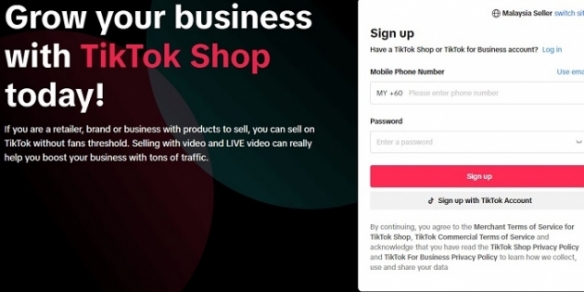Telco Deep Dive 2019: Q2 2019 Roundup sees Maxis shine while Digi lags
By Sharmila Ganapathy October 4, 2019
- All three telcos see drop in subscriber numbers
- Maxis leads in terms of service revenue and ARPU

For the second quarter ended June 30th 2019, Maxis was the overall market leader, despite weak market conditions, standing out in terms of service revenue, as well as average revenue per user (ARPU) for postpaid and prepaid.
Meanwhile, Digi lagged behind both Maxis and Celcom on the above criteria, with the exception of overall subscriber base, where it posted the highest subscriber base. However, it should be noted that all three telcos suffered declines in subscriber numbers during the quarter, compared to the same quarter the year before.
Overall subscriber base
|
Telco |
Q22019 |
Q22018 |
|
Maxis |
*9.52 million |
*9.86 million |
|
Digi |
11.37 million |
11.66 million |
|
Celcom |
8.78 million |
9.62 million |
*Revenue generating subscriptions: Comprise active line subscriptions that excludes those without revenue generating activities for more than 30 days.
As for service revenue, all three telcos suffered year-on-year (y-o-y) declines in this area, with Maxis recording the highest service revenue for the quarter at RM1.92 billion.
Commenting on the decline in service revenue, Maxis said in a statement to Bursa Malaysia that it was largely contributed by the termination of a network sharing agreement, decline in prepaid revenue generating subscriptions, and overall reduction in prepaid and postpaid ARPU, which was offset by the growth in postpaid and home fibre subscribers.
Service Revenue
|
Telco |
Q22019 (RM) |
Q22018 (RM) |
|
Maxis |
1.92 billion |
2.01 billion |
|
Digi |
1.45 billion |
1.48 billion |
|
Celcom |
1.47 billion |
1.55 billion |
As mentioned previously, Maxis led the way in terms of ARPU for prepaid, at RM 41, seeing a marginal y-o-y decline of RM1, while Digi posted the largest y-o-y decline of RM4. Having said that, all three telcos posted declines in prepaid ARPU during the period.
According to Maxis, mobile internet revenue contributed to the stable underlying ARPU. “This was supported by our enhanced and expanded use of data analytics for segmental and personalised offerings, which attracted high data users,” Maxis said in its statement to Bursa.
Average revenue per user (prepaid)
|
Telco |
Q22019 (RM) |
Q22018 (RM) |
|
Maxis |
41 |
42 |
|
Digi |
29 |
32 |
|
Celcom |
37 |
35 |
As with prepaid ARPU, the Big Three saw postpaid ARPU also decline. Digi again suffered the biggest ARPU fall of RM6, while Maxis suffered the second largest decline of RM5, despite recording the highest ARPU among the three. Commenting on the reduced ARPU, Maxis highlighted that it largely due to the change in Mobile Termination Rates and ARPU dilution from Hotlink Postpaid Flex offerings.
Average revenue per user (postpaid)
|
Telco |
Q22019 (RM) |
Q22018 (RM) |
|
Maxis |
91 |
96 |
|
Digi |
70 |
76 |
|
Celcom |
85 |
87 |
All three telcos recorded higher y-o-y capital expenditure, with Celcom emerging the biggest spender at RM517 million during the second quarter of 2019. Maxis was the next at RM267 million an increase of RM55 million compared to the same quarter the year before. According to Maxis, capex was higher mainly due to incremental investment for its home fibre and enterprise segment growth.
Capital expenditure (capex) breakdown
|
Telco |
Full-year allocation for 2019 (RM) |
Q22019 (RM) |
Q22018 (RM) |
|
Maxis |
1 billion |
267 million |
212 million |
|
Digi |
Not available |
261 million |
147 million |
|
Celcom |
Not available |
517 million |
495 million (pre-MFRS) |
Axiata Group, in a statement emphasized that Celcom continued to demonstrate network leadership against its peers as 4G population coverage rose to 93% whilst 4G LTE-A coverage to 81% compared to 89% and 76% respectively in 2Q18.
Commenting on future prospects, Maxis said in its statement to Bursa: “The market is expected to remain competitive and Maxis continues to focus on its long term ambition being Malaysia’s leading converged communications and digital services company, leveraging on its strong 4G Network and expanding its presence in the fixed broadband market in both Consumer and Enterprise.”
In a statement, Digi cited, “…the slower data revenue growth from prepaid, challenged by prolonged intense data competition coupled with effects from regulatory changes in interconnect rates and continued decline from legacy mobile services trimmed overall growth trajectory,” as reasons for its performance during the quarter
The telco added that consequentially, service revenue growth and EBITDA growth guidance for 2019 has been revised to low single digit decline, in line with 1H 2019 performance although anticipating improving sequential performance in 2H 2019.
Axiate emphasized that Celcom’s continuous focus towards profitable segments and increasing its data revenue, saw Arpu for postpaid services grow RM1 whilst Arpu for prepaid services grew by RM3 in 2Q19 compared to the preceding quarter.
This is the 5th in a series of articles in DNA's special focus, Telco Deep Dive 2019. Three more articles are to come.
Related links:


